Accurate measurements are important for the best results in any recipe. Delicious recipes, especially in baking, require precise volume measurements that will give you consistent results. When calculating the number of tablespoons in ⅔ cup, understanding more about the volume of ingredients will turn you into an experienced baker, regardless of the origin of the recipe. When it comes to the cup measurement, there are about 10 2/3 US tablespoons in a US Cup. Keep reading for different ways you can achieve success through a conversion chart and some tips for the best way to make your favorite recipes!
This post contains affiliate links.
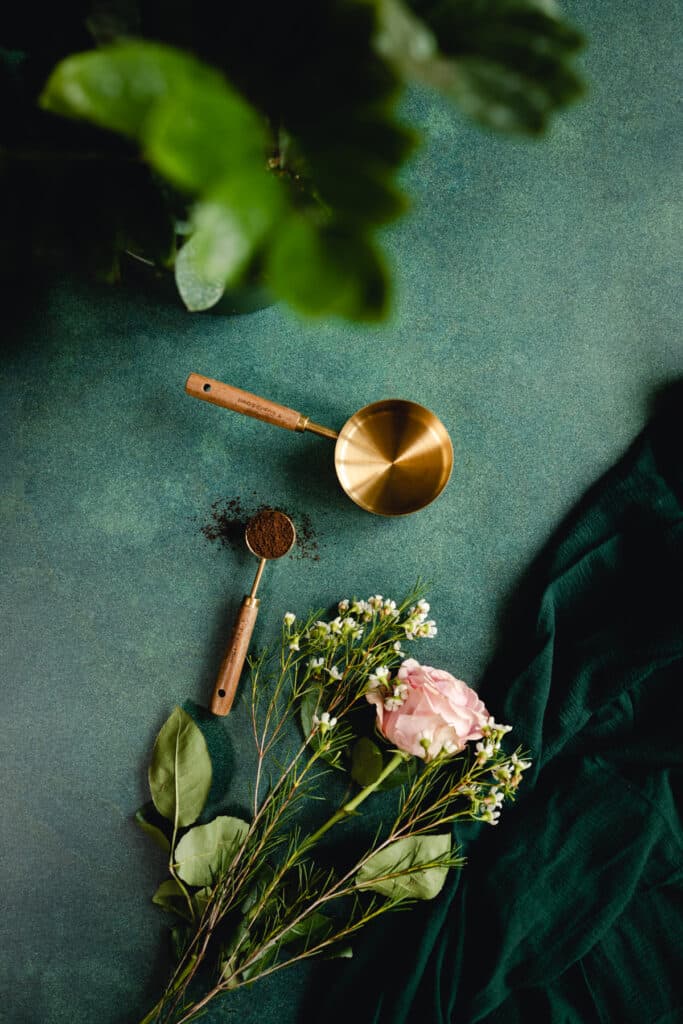
What Is A Tablespoon?
Tablespoons are the term for large serving spoons, a large spoon intended for eating a dish. In addition, a set of tablespoons intended for measuring volume for cooking and baking can provide the exact measurements you need. The United States measures a tablespoon as 0.50 fluid ounces which is 14.8 milliliters. However, the United Kingdom and Canada use a slightly different tablespoon size, which is 0.51 US fluid ounces or 15 ml. Finally, Australia uses the Australian tablespoon, offering yet another tablespoon measurement equivalent to 0.68 US fl oz or 20 ml. Yes, there are different tablespoon sizes around the world. Sorry!
Common Tablespoon Abbreviations
In a recipe, it’s important to understand the abbreviations. I know I’ve accidentally miscalculated before I was an experienced baker, reading the abbreviation wrong and having some pretty unpleasant results. When looking at your recipe and trying to get everything prepped, a tablespoon will either appear as Tbsp., tbsp., Tb., or just T.
Rae’s Fav Measuring Spoons & Cup Sets
Having good measuring spoons and cups is helpful. Here are my top picks! (All are plastic-free, with the exception of the adjustable measuring cup. It is so handy!)
Measuring Cups & Spoons For Dry Ingredients
- Best stainless steel measuring cups and spoons.
- Bold black measuring spoons and cups.
- Gold measuring spoons to splurge on.
Measuring Cups For Liquid Ingredients
Measurement Systems
Another problem tends to arise when you first get into cooking and baking with the measurement systems. Different countries have their own way of doing things, so it’s important to check the country of origin for the recipe you’re using first.
US Customary System (USCS)
The US customary system (USCS) measures volume through cubic inches, cubic feet, and cubic yards. For liquid ingredients, volume measurements are done in US fluid ounces. One fluid ounce in the US equals 1/16 of a US pint. You may have noticed that when you go to the store, you see milk available in pints, quarts, half gallons, and gallons. Dry volume is measured differently, though. These are done in cubic inches.
Imperial Cup Vs. Metric Cup
In the United States, we’re using the British imperial system, where a cup is equivalent to 237 ml. In the metric system, a cup is 250 ml. Different countries, particularly other English-speaking countries, once used the imperial system. For Australia, New Zealand, Canada, and the UK, that cup was equal to 284 ml.
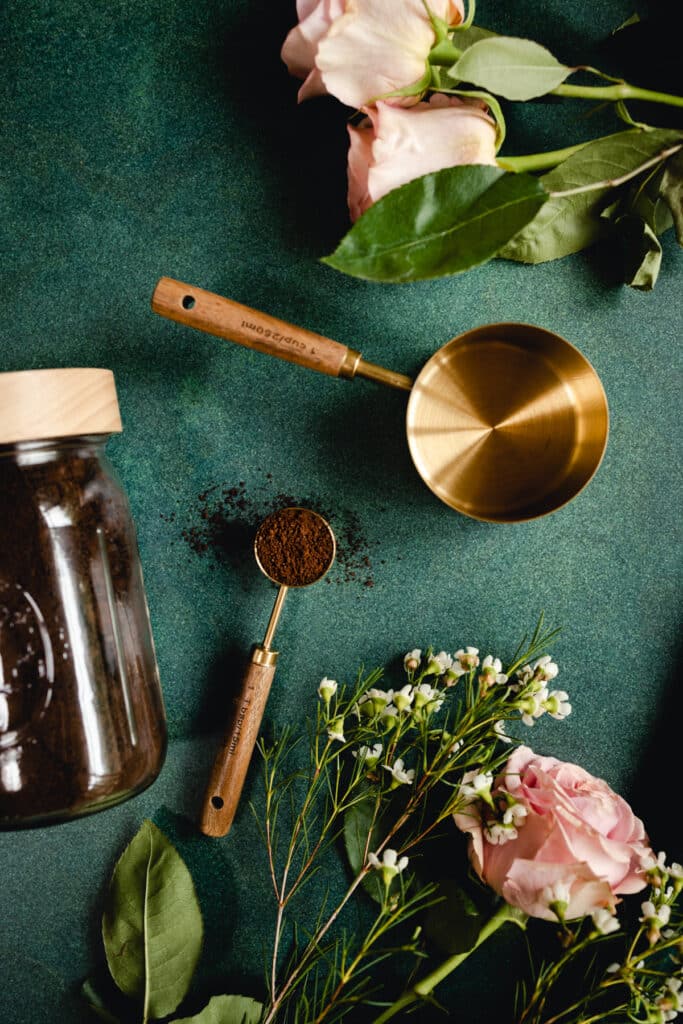
How Many Tablespoons In ⅔ Cup Oil?
When you consider a whole cup, you have 16 tablespoons or 8 fluid ounces in it. But for ⅔ of a cup, that equals 10 and ⅔ tablespoons. Naturally, this sounds confusing, but if you recall, a tablespoon is composed of 3 teaspoons. This means that you would measure out 10 tablespoons of oil followed by 2 teaspoons to get ⅔ cups of oil.
How Many Tablespoons In ⅔ Cup Of Water?
Since a cup of water is also a liquid ingredient, it would take the same amount of tablespoons to measure out ⅔ cup. That’s 10 tablespoons plus 2 teaspoons.
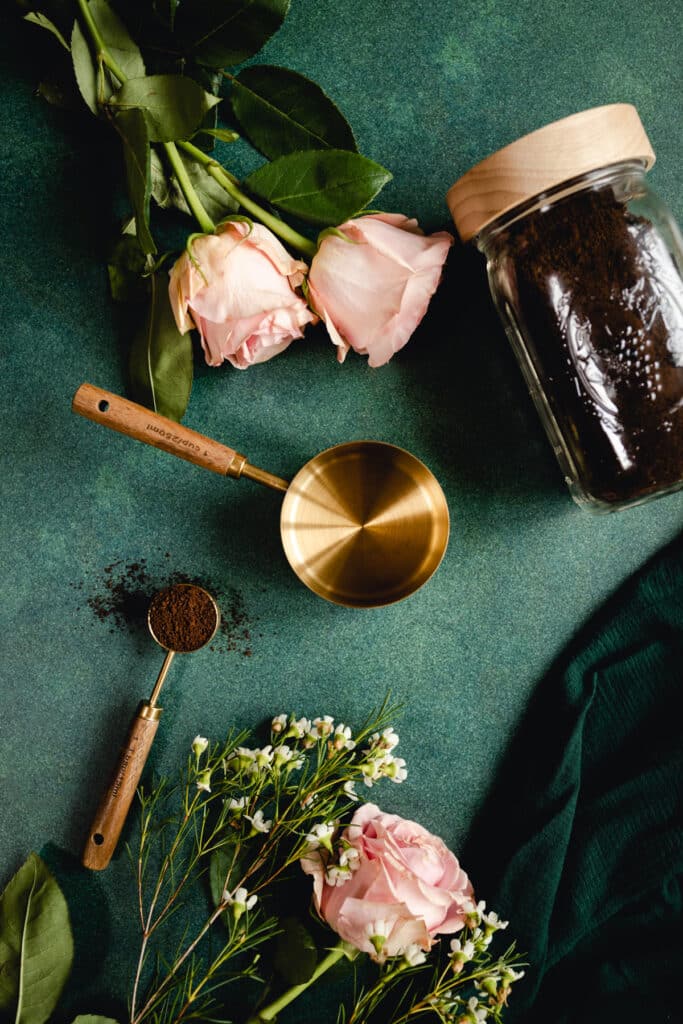
Basic Tablespoon Conversions – Standard Measurements
The reference chart below is a handy one to keep around. This can help you see the equivalents for tablespoons and make those conversions to US cups with ease. (Including how many tablespoons are in 2/3 cup.)
| US Tbsp | US C. | UK/CA Tbsp | UK/CA C. | Australia Tbsp | Australian C. |
|---|---|---|---|---|---|
| 1T | 1/16 | 1T | 1/16 | ~3 1/8t | 1/16 |
| 2T | 1/8 | 2T | 1/8 | 1T + 2 1/4t | 1/8 |
| 4T | 1/4 | 4 Tbsp | 1/4 | 3T + 1/2t | 1/4 |
| 5T + 1t | 1/3 | 5T + 1t | 1/3 | 4T + 2/3t | 1/3 |
| 8T | 1/2 | 8T | 1/2 | 6T + 1t | 1/2 |
| 10T + 2t | 2/3 | 10T + 2t | 2/3 | 8T + 1/3t | 2/3 |
| 16T | 1 | 16T | 1 | 12T + 2t | 1 |
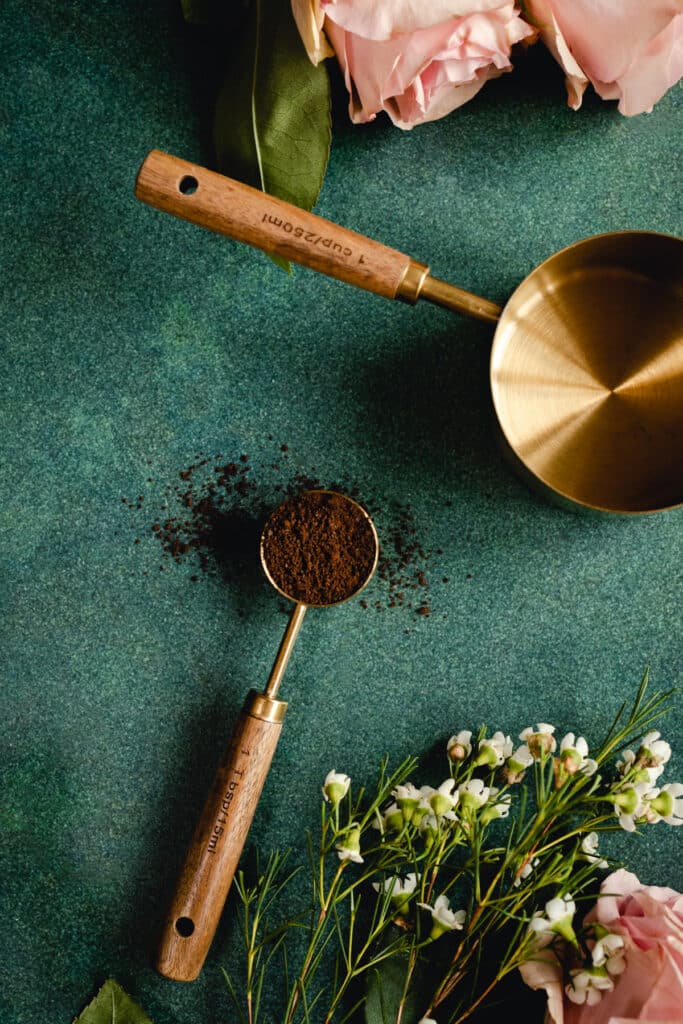
Why Is Knowing Tbsp To Cup Conversion Important?
When a recipe is created, it is written with the intent to provide a specific number of servings. So, you may need to know how many tablespoons are in ⅔ a cup or even a whole cup to either make more servings or reduce the recipe servings. This is incredibly handy when you decide to make a favorite recipe that you’ve prepared for your own family for a larger crowd. It can also be a blessing if you only have yourself to cook for because while leftovers are indeed handy, you may not be able to finish it all, even when using it for meal prep.
Why Are Tablespoons To Cup Conversions Important In Cooking?
While cooking is far more forgiving than baking in terms of measurements, it’s still important to know how many tablespoons are in a cup or even a fraction of a cup, such as ⅔ a cup. If you have family visiting, maybe you want to make your favorite vegan soup for them to enjoy. When you know those tablespoon-to-cup conversions, you can keep the same flavors intact no matter how many servings you’re preparing.
No one wants to trot out their favorite recipe that they’ve doubled or tripled, only to have it lack flavor. On the opposite end, you may find that if you don’t reduce the recipe measurements properly, some of those flavors that are supposed to be charming are too overpowering. A prime example is a simple ingredient like salt. In either instance, if you add too much or too little of this pantry staple, it can totally ruin the flavor.
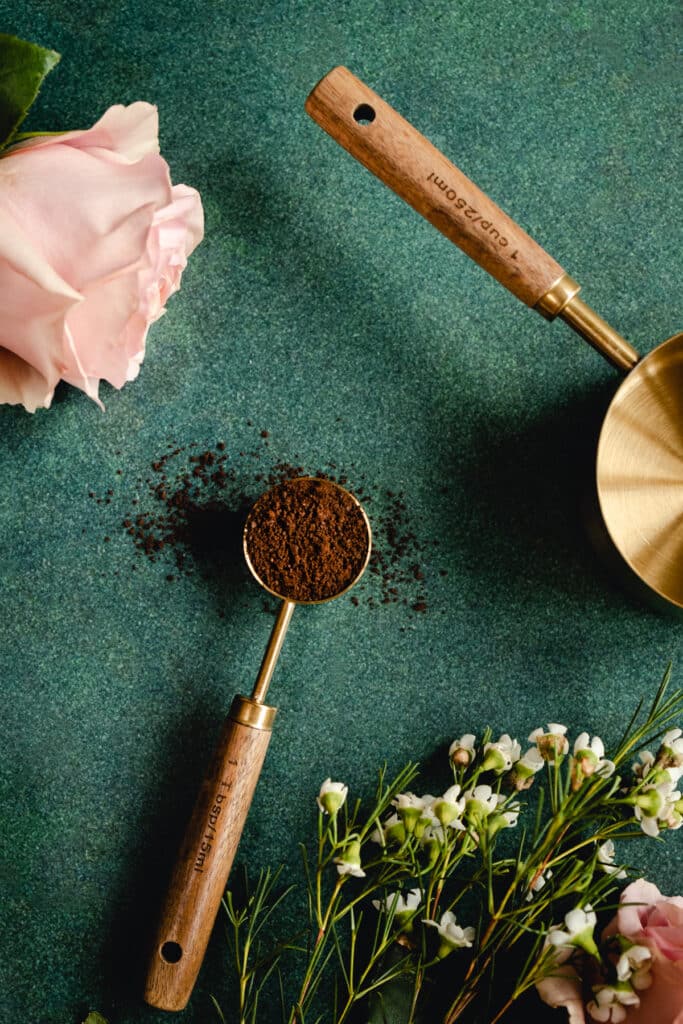
Why Is Tablespoon To Cup Conversion Important In Baking?
Now when it comes to baking, measurements are extra important to get right. Having too much or too little of a key ingredient will affect the outcome. You could wind up with dry banana bread, for example, or muffins that don’t rise. While this is true even if you follow a recipe exactly for the serving size, when you try to adjust those measurements, you may run into trouble if you don’t know how to convert tablespoons to cups.
How to measure teaspoons, tablespoons, and cups accurately for baking?
Tempting as it may be to plunge your measuring spoons or cups into an ingredient, like flour, for example, don’t do that. This creates compaction, and hence, you wind up with more flour than you need for a given recipe. A better way to get those measurements and ensure precision in them is to scoop out the flour with another item (such as a measuring spoon) and fill your measuring cup one scoop at a time.
And, of course, you will want to level off the top so there isn’t excess. Even if you scoop those dry ingredients into your measuring cups to fill them up rather than dunk them into the ingredients themselves, that overflow can also cause your recipe measurements to be completely thrown off. This is applicable to any cup of an ingredient, such as a cup of flour, a cup of sugar, brown sugar, etc.
When it comes to wet ingredients, you will want to measure at eye level. Look at the lines on your measuring cups and make sure that the line of liquid – whether it’s water, oil, a cup of milk, or whatever – is just below the indicated line of measurement you need for the recipe.
What Is The Most Accurate Way to Measure Ingredients For Baking?
Even when you take the time to measure your dry ingredients out properly, as described above, there is still so much room for error. In fact, if you have tried it that way before and are still scratching your head as to what went wrong, the best thing you can do is invest in a kitchen scale.
Volume measurements can keep you guessing even if you handle them with care. But weight is something that can be easily checked with a kitchen scale. By measuring out the grams, you will get the absolute most accurate measurements and have your recipes turn out right every time. Well, as long as you don’t overbake them, that is!
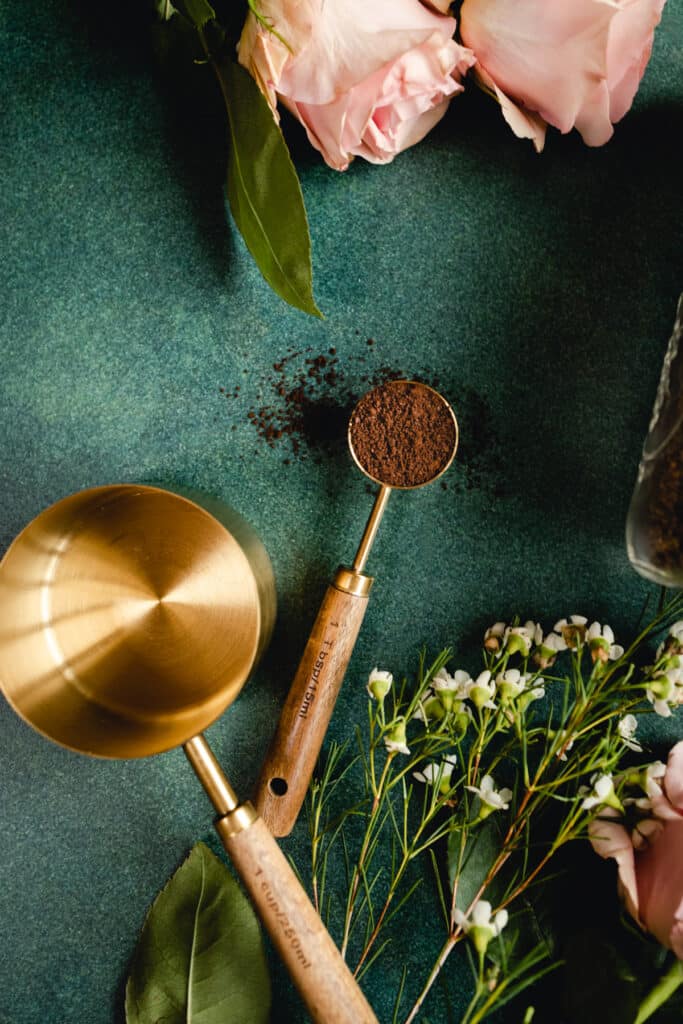
Liquid Oz To Tbsp Conversion Chart
Are you using too much liquid in your recipes or not enough? By measuring your liquids using this standard unit of measurement, you can get the most accurate results. This easy reference table below shows you how to convert tablespoons to cups and to US wet ounces. (It also shows how many tablespoons are in 2/3 cup.)
| US Tablespoons | US Cups | Fluid Ounces |
|---|---|---|
| 1T | 1/16 C | .5 fl oz |
| 2T | 1/8 C | 1 fl oz |
| 4T | 1/4 C | 2 fl oz |
| 5T + 1t | 1/3 C | 2.66667 fl oz |
| 8T | 1/2 C | 4 fl oz |
| 10T + 2t | 2/3 C | 5.33333 fl oz |
| 12T | 3/4 C | 6 fl oz |
| 16T | 1 C | 8 fl oz |
Free Download And Printable Conversion Chart
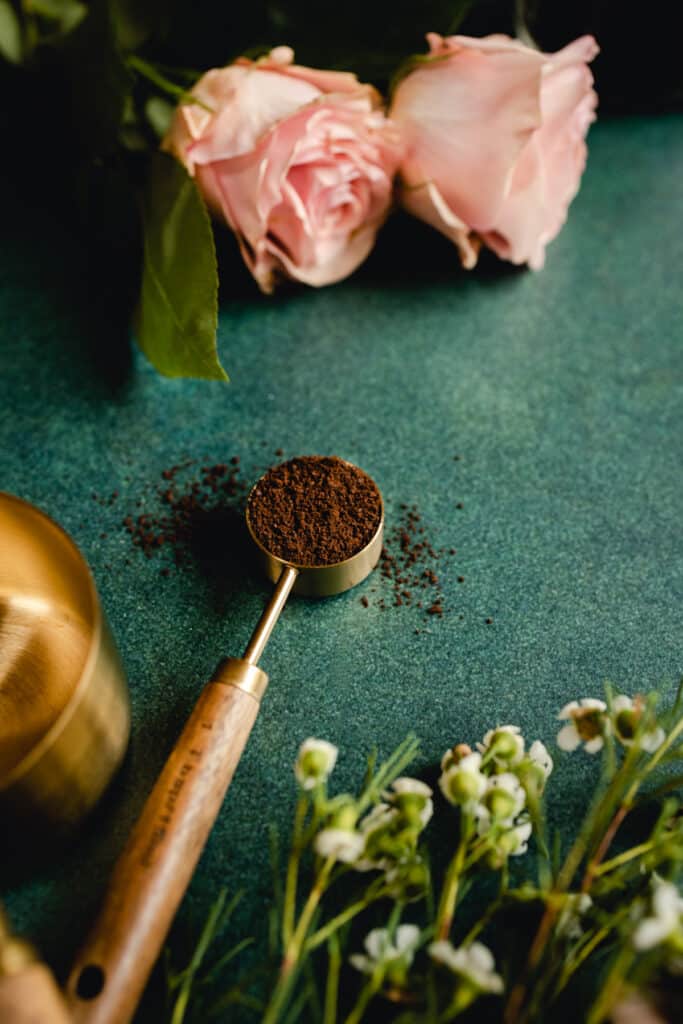
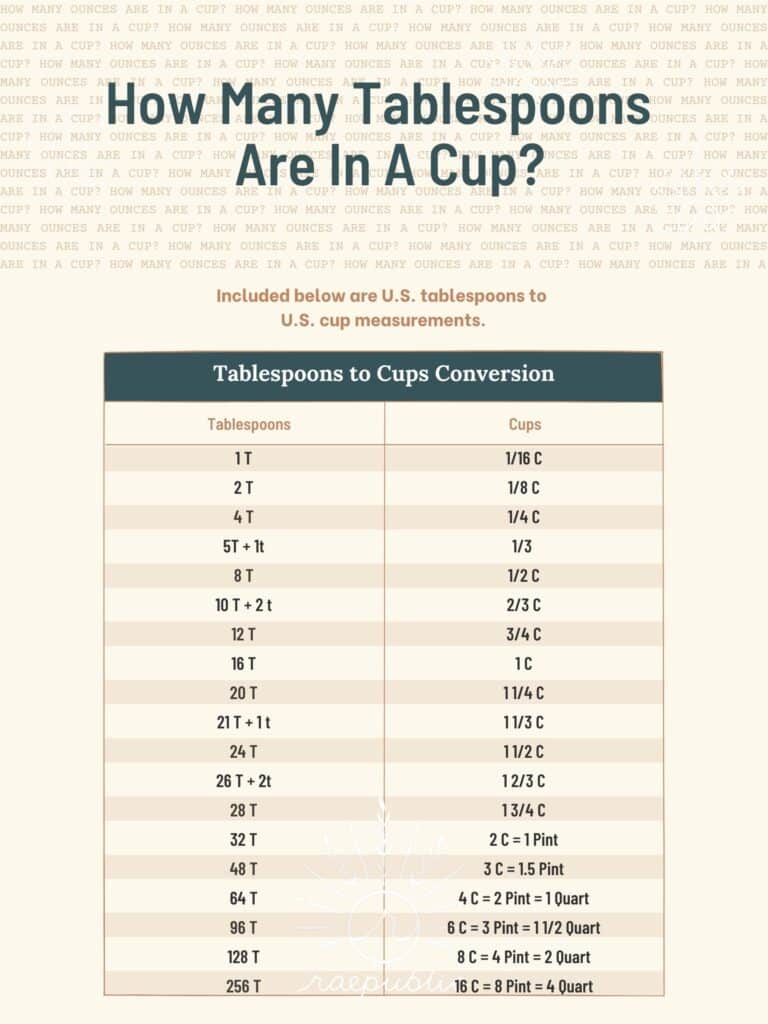
FAQ
10 tablespoons is almost equal to ⅔ of a cup. To get it just right, you will also need ⅔ a tablespoon added in. A tablespoon equals 3 teaspoons, so ⅔ a tablespoon is equal to 2 teaspoons. In the end, you would measure out 10 tablespoons and 2 teaspoons.
The same tablespoon measurements would apply with the 10 tablespoons plus 2 teaspoons to make ⅔ cup of butter. Remember, one stick of butter is half a cup. So you’d need 1 and ⅓ sticks of butter to make this equal.
If you look at my convenient chart, you will see that two-thirds of a cup is actually bigger than a half cup. In ⅔ cup, you have 10 tablespoons plus 2 teaspoons, while for a half cup, it is 8 tablespoons.
Butter measured in ⅔ a cup converted to tablespoons is 10 tablespoons plus 2 teaspoons for an accurate measurement.
Dry ingredients like sugar are also measured in 10 tablespoons plus 2 teaspoons to equal ⅔ cup. You will want to make sure each tablespoon is a level tablespoon rather than a heaping one to ensure precise measurements.
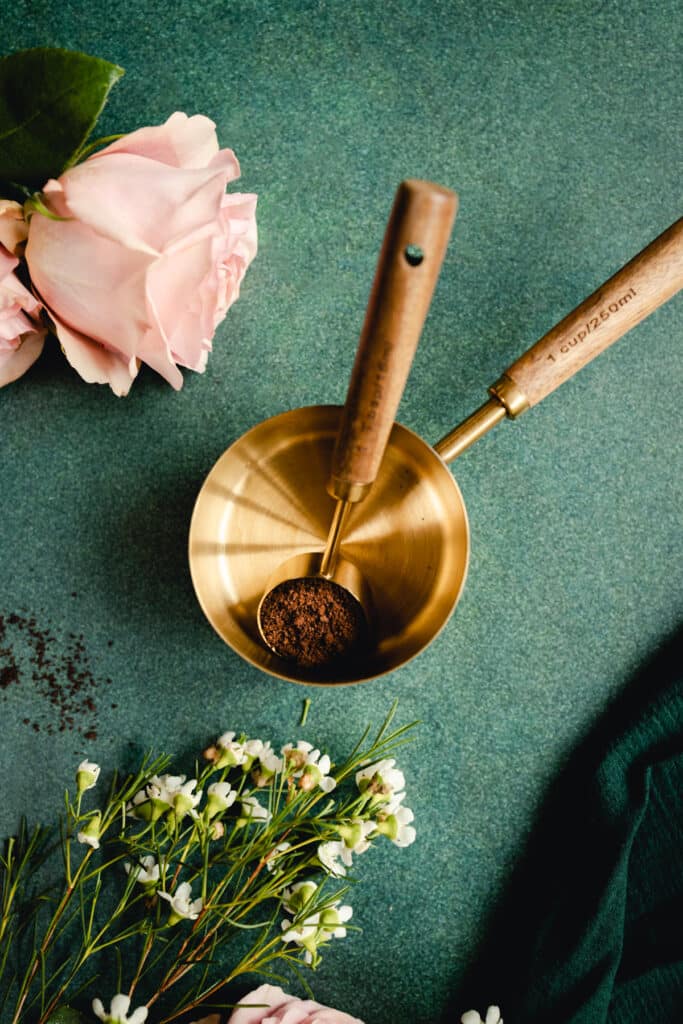
Final Words
It isn’t always easy to get measurements right, and can be very frustrating to new chefs in their kitchens trying to follow recipes. However, with my chart of quick conversions, I hope it takes the guesswork and the confusion out of the equation so that you develop a love of cooking and baking for years to come!
More Measurement Articles
This post may contain affiliate links, meaning I’ll receive a commission if you purchase through those links at no extra cost to you. Please read our full disclosure for more information. Thank you for supporting Raepublic.

Thanks so much for another helpful article.
You’re welcome